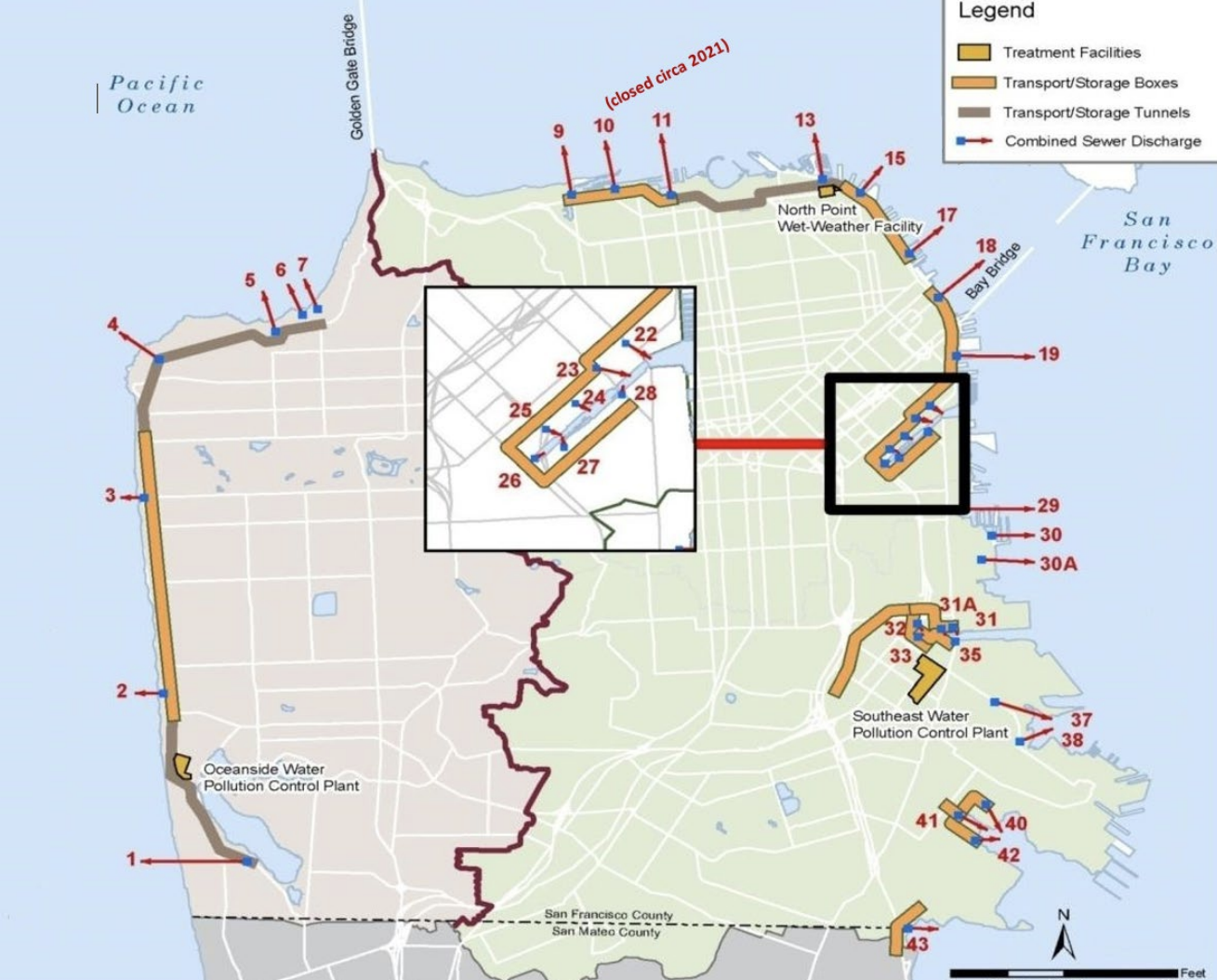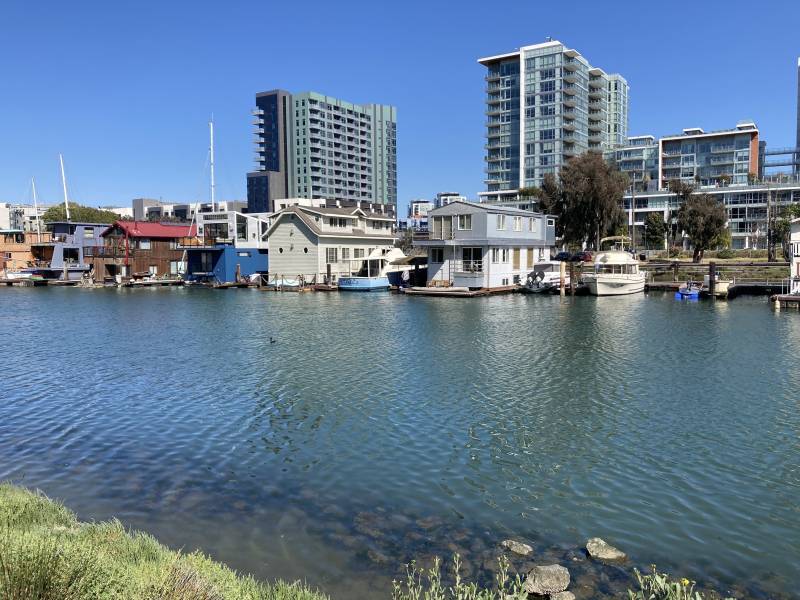It’s a clear, sunny day on Mission Creek. Kayakers are paddling by, and people are walking their dogs past the houseboats that line the banks near Oracle Park.
But longtime resident Peter Snider said that, especially after heavy rains, some pretty nasty things go floating downstream.
“Condoms,” Snider said. “Turds, actual turds, come down. Dead fish.”
San Francisco discharges nearly 2 billion gallons of combined stormwater and raw sewage each year into Mission Creek and other points around the shoreline.
And this has been an issue for decades. “When I first moved down here,” Snider said, “it used to be called s**t creek.”

Legal battles
The resulting public health risks are serious, according to a lawsuit the federal EPA and California Water Board filed against the city in May.
“We’ve seen all kinds of complaints from exposure to raw sewage, including rashes on the skin,” said Sejal Choksi-Chugh, executive director of San Francisco Baykeeper, which is one of the plaintiffs. “Anybody who’s swimming in the bay in that area where the discharge is happening, or kayaking, getting water in their face or breathing the vapors in, can definitely be impacted by bacteria.”
The lawsuit said children, the elderly, pregnant women, and people with weakened immune systems are at greater risk and that San Francisco has not been maintaining or operating its sewer system properly.


